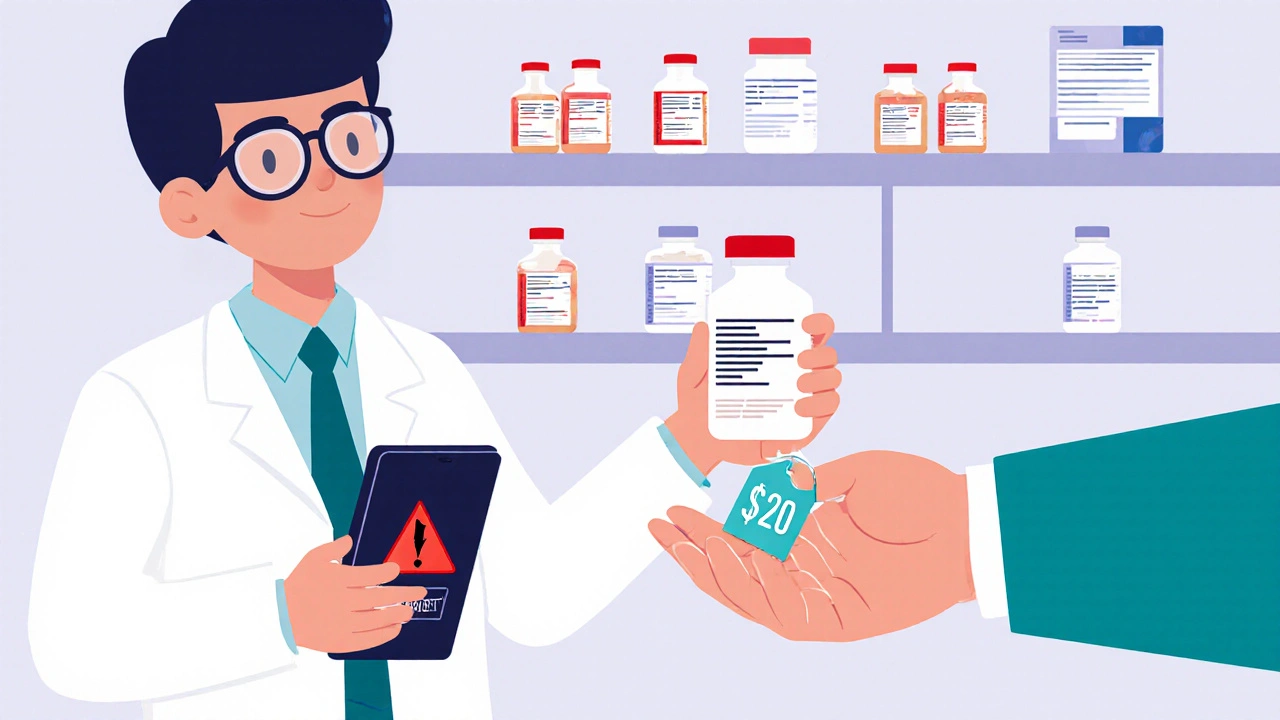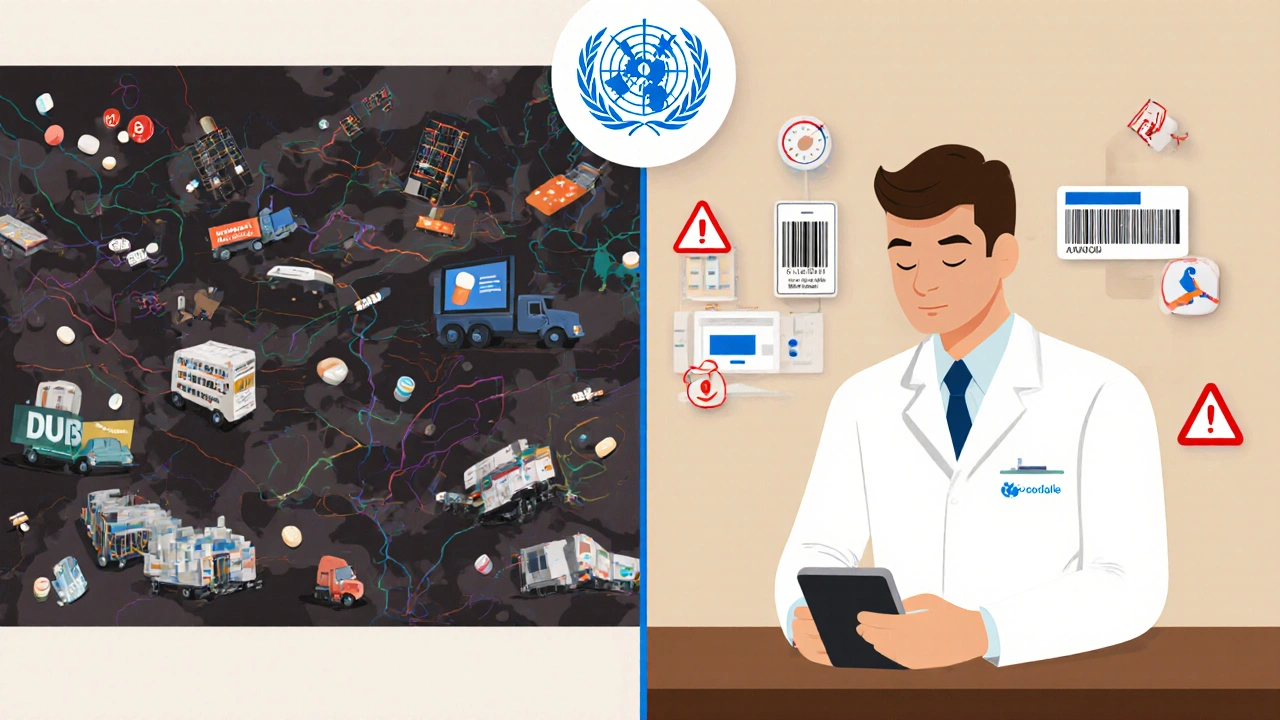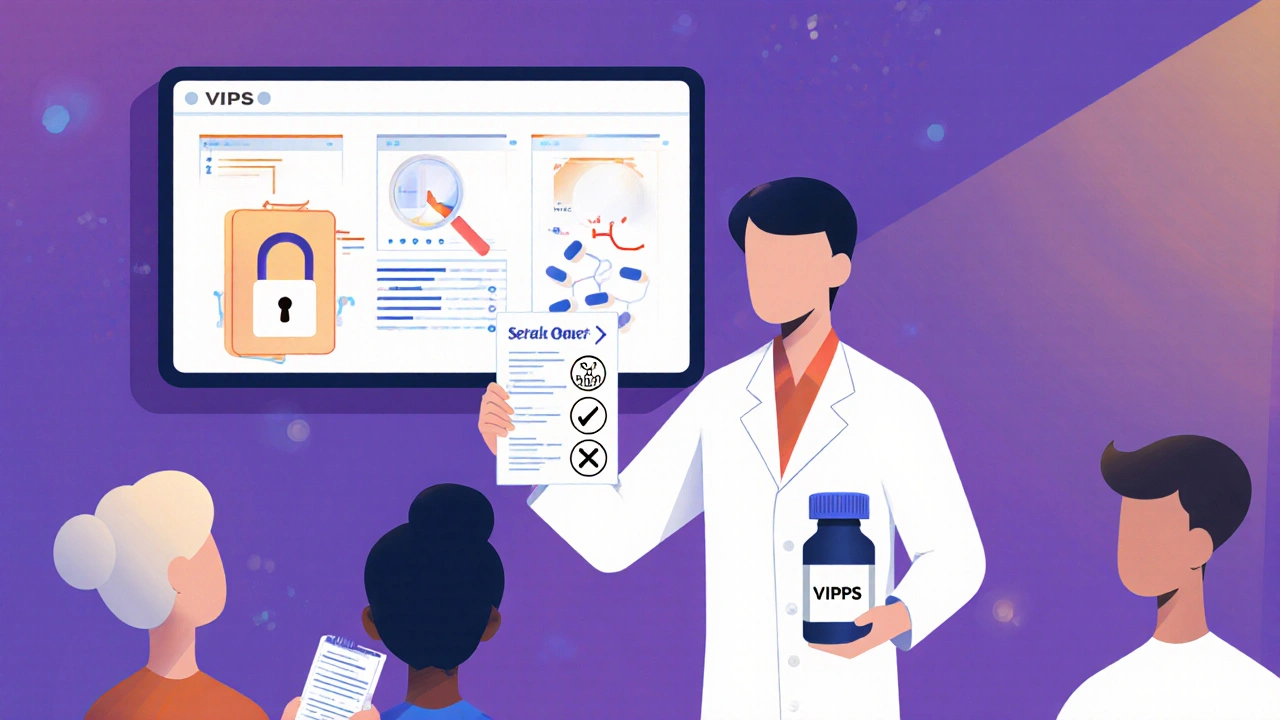Pharmacist Education: Training on Counterfeit Drug Detection

Every year, millions of fake pills, contaminated injections, and mislabeled creams slip into the global drug supply. Some look identical to the real thing. Others are just slightly off-wrong color, odd texture, faint smell. If you’re a pharmacist, you’re often the last person who sees that drug before it reaches a patient. And if you miss it, someone could die.
Why This Training Isn’t Optional Anymore
In 2024, law enforcement agencies across 136 countries reported over 6,400 incidents of counterfeit, stolen, or illegally diverted medications. That’s not a statistic-it’s a daily reality. Oncology drugs. Insulin. Antibiotics. Even vaccines. Criminals are no longer just flooding markets with fake Viagra or weight-loss pills. They’re targeting life-saving medicines because the profit margins are higher and the risk of getting caught is lower in many regions. The U.S. has the most advanced drug tracking system in the world thanks to the Drug Supply Chain Security Act (DSCSA), passed in 2013. But even here, counterfeit drugs find their way in-through online pharmacies, shady distributors, or stolen inventory. In other countries, the system is barely there. That’s why pharmacists can’t wait for regulations to catch up. They need to be trained now.What Pharmacists Need to Know
Training isn’t just about spotting fake labels. It’s about understanding how counterfeits enter the system-and how to stop them. Here’s what matters:- Price anomalies: If a medication is being offered at 60% below the wholesale acquisition cost, it’s a red flag. No legitimate supplier operates that way.
- Unusual packaging: Tiny differences matter-a slightly misaligned barcode, inconsistent font size, or a seal that doesn’t match the manufacturer’s specs.
- Unverified suppliers: Always check the manufacturer’s official website for authorized distributors. If the pharmacy isn’t listed, don’t accept the product.
- Specialty drugs: Biologics, cancer treatments, and injectables have tightly controlled distribution chains. Any deviation from that chain is suspicious.
- Online sales: Over 13,000 illegal websites were shut down in 2025 alone during Interpol’s Operation Pangea XVI. Patients are buying from these sites-and bringing the drugs to your pharmacy.
Modern Tools Are Changing the Game
Gone are the days of calling manufacturers or squinting at batch numbers. Today’s pharmacists have access to tools that make verification fast and accurate. Take RxAll’s handheld devices. They use spectral analysis and AI to scan a pill or vial in under 10 seconds. The device compares the chemical signature against a database of authentic products. It doesn’t just tell you if it’s fake-it tells you how it’s fake: wrong active ingredient, wrong binder, wrong coating thickness. Pharmacists in community settings report that these tools cut verification time by 80% and boost confidence dramatically. Other platforms, like TrainingNow.com, offer 45-minute online courses that walk pharmacists through real-world scenarios: a customer walks in with a bottle of insulin bought online for $20. What do you do? The course walks you through checking the distributor, contacting the manufacturer’s hotline, and documenting the incident. It’s not just theory-it’s practice.
Global Training Programs Are Evolving
In 2021, the International Pharmaceutical Federation (FIP) and the World Health Organization (WHO) launched a competency-based curriculum funded by the European Union. It was tested with 355 pharmacy students in Cameroon, Senegal, and Tanzania. After the training, students’ ability to identify counterfeit drugs improved by over 70%. That’s not just knowledge-it’s saved lives. Now, WHO is rolling out an updated global toolkit in late 2024. This version adds new modules on online sales, counterfeit biologics, and how to report suspicious products to national health authorities. It’s designed for low-resource settings where internet access is limited, so it works offline and on basic smartphones. Meanwhile, Pfizer’s Anti-Counterfeiting Program has trained law enforcement in 183 countries since 2004. But they don’t stop there. They work directly with pharmacists, teaching them how to recognize patterns in counterfeit batches and how to share intel with regulatory agencies.What’s Missing in Most Training Programs
Too many programs focus only on physical inspection. That’s not enough anymore. Counterfeiters are getting smarter. Some now replicate serial numbers, holograms, and even tamper-evident seals. The real threat isn’t just bad drugs-it’s convincing bad drugs. The best training now includes:- Understanding how supply chains are exploited
- Recognizing social engineering tactics used by suppliers
- Knowing how to document and report incidents properly
- Learning to communicate risks to patients without causing panic

How to Get Trained Right Now
You don’t need to wait for your employer to offer training. Here’s where to start:- Check your state board’s CE requirements: Many states now require continuing education in drug safety or counterfeit detection. Look for courses approved by PTCB or ACPE.
- Enroll in TrainingNow.com’s Medicare FWA course: Even though CMS no longer mandates their specific course, it’s still one of the most practical, mobile-friendly options available. It takes less than an hour and gives you CE credits.
- Try PowerPak’s “Fakes in the Pharmacy” module: This free continuing education course breaks down the global scale of counterfeiting and explains how to spot red flags in your daily workflow.
- Join RxAll’s pharmacist network: Their platform includes an online forum where pharmacists share real cases, ask questions, and get advice from experts. It’s like having a global peer group watching your back.
What Happens If You Don’t Train?
Let’s say you receive a shipment of metformin from a new supplier. The price is low. The packaging looks fine. You don’t question it. A patient takes it. Their blood sugar spikes. They end up in the ER. Turns out, the pills had no active ingredient-just chalk and dye. You didn’t cause it. But you didn’t stop it either. Pharmacists have a legal and ethical duty to verify. In some states, failure to report a suspected counterfeit can lead to license suspension. In others, civil liability follows if harm occurs. The stakes aren’t hypothetical. In 2024, 3,658 people were arrested for pharmaceutical crimes worldwide. That’s not a small problem. It’s a systemic crisis.The Future Is Here
AI-powered detection tools are getting better every year. Soon, they’ll be able to identify counterfeit biologics-drugs made from living cells that are nearly impossible to replicate. That’s the next frontier. Training programs are also starting to include patient education components. RxAll, for example, gives pharmacists printable handouts to explain to patients how to spot fake drugs when they buy online. Because if the patient doesn’t know what to look for, they’ll keep buying from shady sites. The bottom line? This isn’t about compliance. It’s about survival-for your patients, your profession, and your conscience.What should I do if I suspect a drug is counterfeit?
Isolate the product immediately. Do not return it to the supplier. Document everything: batch number, supplier name, date received, and any visual or physical irregularities. Contact the manufacturer’s authenticity hotline using the official number on their website-not the one printed on the packaging. Report the incident to your state pharmacy board and the FDA’s MedWatch program. If you’re in a community pharmacy, alert your local health department. Never dispose of suspected counterfeits yourself-law enforcement may need to seize them.
Are there free training resources for pharmacists?
Yes. PowerPak offers a free continuing education module called "Fakes in the Pharmacy: Counterfeit Drugs on the Rise," which covers global trends, detection methods, and reporting procedures. The WHO and FIP also provide downloadable training materials in English and French through their public health portal. Many state pharmacy associations offer free webinars on drug safety. Always verify that the source is legitimate-avoid any site asking for payment to access "official" training.
Can I rely on barcode scanners to detect counterfeits?
No. Barcode scanners only confirm that the number matches the product name. Counterfeiters can replicate valid barcodes. What you need is chemical verification-like spectral analysis or AI-based detection-that checks the actual composition of the drug. Barcodes are useful for tracking, but not for authenticity. Always combine barcode checks with visual inspection and supplier verification.
Why are counterfeit drugs more dangerous now than before?
Because criminals are targeting high-value, life-saving drugs like insulin, cancer treatments, and antibiotics. In the past, counterfeits were mostly for lifestyle meds. Now, they’re designed to mimic the most critical medications. Some contain toxic substances like lead or arsenic. Others have no active ingredient at all. And with online sales booming, patients are buying these drugs without any oversight. That makes detection by pharmacists more urgent than ever.
Is this training required by law?
In the U.S., CMS used to require Fraud, Waste, and Abuse training within 90 days of hire, but since 2019, they no longer mandate a specific course. However, many states and employers still require it. The PTCB requires diversion prevention training for certified technicians. More importantly, pharmacists have a professional duty under the Code of Ethics to protect patient safety. Failing to act on suspected counterfeits can lead to disciplinary action, even if not explicitly required by law.
How can I help my patients avoid counterfeit drugs?
Educate them simply: Never buy prescription drugs from websites that don’t require a prescription. Look for the VIPPS seal on online pharmacies-this means they’re verified by the National Association of Boards of Pharmacy. Warn them that if a drug seems too cheap, it’s likely fake. Encourage them to bring all medications to you for review, even if they were bought online. Give them printed materials from trusted sources like WHO or the FDA. Your advice saves lives more than any tool ever could.

Asha Jijen
November 26, 2025 AT 23:34So we're supposed to be drug detectives now? Cool. I got my coffee, my phone, and a 12-hour shift. Tell me again why I need to carry a spectrometer in my apron?
Also, who prints these training docs? The guy who thinks 'red flag' means a literal flag?
Edward Batchelder
November 28, 2025 AT 02:55Thank you for this comprehensive, vital piece. Every pharmacist deserves access to these tools-not as a luxury, but as a professional necessity. The fact that we’re still debating whether this training should be mandatory is a moral failure. We are not clerks. We are the final checkpoint between a patient and potential harm. And if we don’t act, who will?
Let’s not wait for legislation. Let’s lead.
TrainingNow.com, PowerPak, RxAll-they’re not options. They’re obligations.
reshmi mahi
November 28, 2025 AT 08:10USA spends billions on this fancy AI scanner tech while India still uses flashlights to check pill colors 😂
But hey, at least we got fake insulin with real branding now. Progress, baby! 🇮🇳💊
laura lauraa
November 28, 2025 AT 13:43Let me be perfectly clear: this is not a training issue. This is a systemic collapse of pharmaceutical ethics, regulatory capture, and the commodification of human life under late-stage capitalism. We have turned healthcare into a marketplace where the most vulnerable are preyed upon by oligarchs who weaponize scarcity. And now we ask pharmacists-overworked, underpaid, and emotionally depleted-to be the sole arbiters of life and death? This is not responsibility. This is abandonment.
And yes, I’ve read the WHO toolkit. It’s a Band-Aid on a severed artery.
Gayle Jenkins
November 29, 2025 AT 05:33YES. This is exactly what we need. I just finished the PowerPak module and I’m already using the checklist in my pharmacy. One patient came in with insulin from a ‘discount pharmacy’ online-$22 for a vial. I pulled out the scanner, ran it, and it flagged the binder composition. Turned out to be a fake.
That patient cried. Said they’d been giving it to their kid for three months.
Don’t wait for your boss to send you a link. Do it today. Your next patient might be someone’s mom. Or your sister. Or you.
Kaleigh Scroger
November 29, 2025 AT 12:19People keep talking about AI tools like they’re magic wands but the real issue is supply chain transparency and the fact that most pharmacies still rely on handwritten logs and word-of-mouth distributors. I’ve seen it. A shipment comes in labeled as Pfizer insulin, barcode scans fine, packaging looks perfect, but the batch number doesn’t match the manufacturer’s database because the label was printed on a stolen template from a legitimate distributor that got hacked last year. No one caught it because no one cross-referenced the batch with the FDA’s EPCIS feed. The tools exist. The data exists. The training just doesn’t include how to use the damn APIs.
Also, if you’re not documenting every suspicious case in your pharmacy’s incident log, you’re not just negligent-you’re legally exposed. And yes, I’ve been sued for not reporting one. It wasn’t fun.
Elizabeth Choi
November 30, 2025 AT 05:57Let’s be honest: 90% of these ‘counterfeit’ reports are just pharmacists who didn’t check the supplier’s website. The other 10% are people who panic because the pill looks slightly off-color. Most of these ‘life-saving’ drugs are just generic formulations with different fillers. The real crisis is that we’ve turned every pill into a potential crime scene.
Also, who approved TrainingNow.com? Their interface looks like it was designed in 2008.
Allison Turner
November 30, 2025 AT 17:22Wow. Another alarmist article. Fake insulin? Really? Where’s the data? Who died? What’s the actual death rate from counterfeit meds? 0.0001%? And you want me to spend 45 minutes on a course because some guy on Reddit bought a fake pill off a shady site?
Meanwhile, real drugs are still priced like luxury watches. But sure, let’s focus on the tiny minority of fakes instead of the system that makes them necessary.
Darrel Smith
December 1, 2025 AT 19:20THIS IS THE MOST IMPORTANT THING YOU’LL EVER READ IN YOUR LIFE. DO NOT IGNORE THIS. I’ve seen it. I’ve held a vial of fake antibiotics that had lead in it. I’ve watched a man die because his blood pressure med was just sugar and glitter. And now you’re sitting there saying ‘it’s not my job’? Your job is to keep people alive. That’s it. That’s the whole thing. No excuses. No ‘I’m too busy.’ No ‘I didn’t know.’ You knew. You always knew. And now you’re choosing to look away. That’s not negligence. That’s evil.
Go. Now. Do the training. Save a life. Or don’t. But don’t pretend you didn’t know.
Aishwarya Sivaraj
December 2, 2025 AT 23:00Just wanted to say thank you for writing this. I’m a pharmacist in rural India and we don’t have scanners or fancy AI. We use our eyes, our hands, and the trust we build with patients. One woman brought me a bottle of insulin she bought from a street vendor for 50 rupees. The label was smudged, the cap was loose, and the liquid looked cloudy. I didn’t have a scanner but I remembered a training video from WHO’s offline app. I called the manufacturer’s hotline using the number on their official site-not the one on the bottle-and they confirmed it was fake. We reported it. She cried. But she’s alive. And now she tells everyone not to buy from street vendors. That’s how change happens. Not with tech. With people. Thank you for reminding us we’re not alone.
Iives Perl
December 3, 2025 AT 21:17AI scanners? Please. The FDA is in on it. They let these fakes in so they can sell you the ‘real’ version at 10x price. You think this is about safety? It’s about profit. The same people who make the drugs own the scanners. The same people who run the training own the online pharmacies. Wake up. The system is rigged.
:)
Alex Hess
December 4, 2025 AT 11:44Pathetic. You call this training? A 45-minute online quiz with cartoon avatars? Real pharmacists in Europe and Japan are using blockchain-verified supply chains and real-time spectroscopy integrated with hospital EMRs. Meanwhile, we’re giving out PDFs and calling it progress. This isn’t education. It’s PR for companies selling overpriced software. And you’re celebrating it like it’s a Nobel Prize.
Shame.